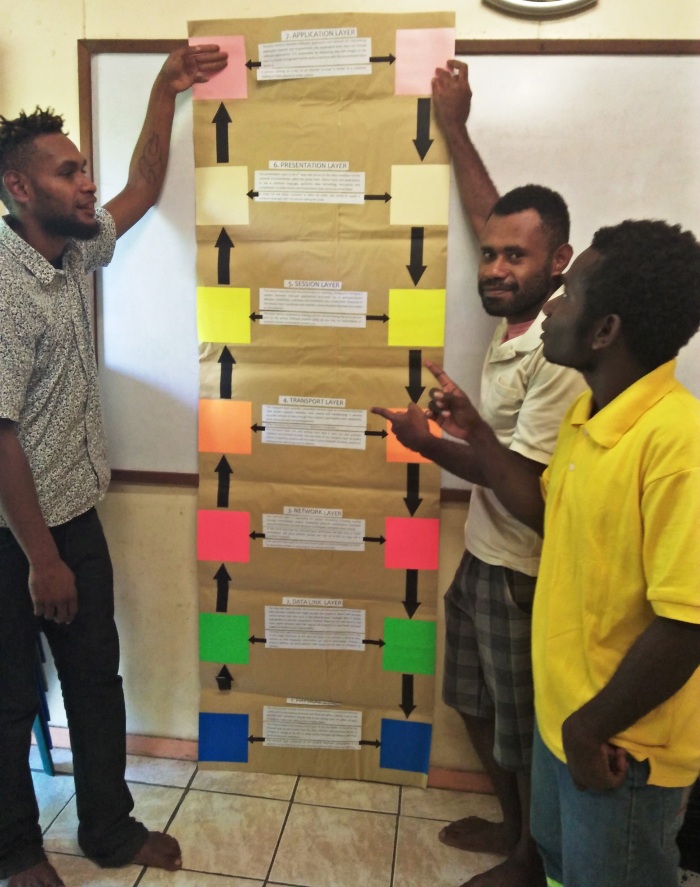Everyone everywhere on these planet does some kind of data processing everyday. From an infant baby who wets his/her diaper to a grown up adult. For the baby, s/he senses that the diaper is wet and the skin sends some signal to the brain for some
processing. After the processing in the brain, the baby senses the wetness as cold and wet and does some output, in which s/he cries to have the diaper remove from him/her.
For a teenage, s/he might be browsing the internet to download some information to help him/her with an assignment. When the teenage sends a request to particular URL, the request data is sent to the specific host which later retrieves the information, does some processing to the data and sends it back to the teenager whom s/he views it.
As an adult, we communicate through a phone (calls/text messages), email, conversations etc. which require some transmitting and processing of data. That is, taking in the information, do some processing of the data in the brain and giving out the information. If an adult decides to send an email, the message is the data which is process and sent to the address specified by the sender. Before the receiver views the message, the data bits are being processed so that it will be well received by the recipient. Whether we receive an analog signal from our surrounding or digital signal from other devices such as mobile phone, computer etc., there is always some kind of data processing going on every second.
Currently, the first year IT trainees at MTI are learning what actually happens to the data that is being transmitted over vast networks every second in one of their module Data Communication. As explained by Caspar Luba, O’sshanessey Tokmun and Linus Paito, the first year IT Trainees at MTI, Data Communications is the structure of communication process dealing with information and network devices like computers, switches etc. and the use of specific softwares to communicate over data networks when transmitting data using computers, mobile phones, tablets etc.
O’sshanessey Tokmun stated that they learnt about the history of telecommunications and how it has evolved through time before they actually learnt what data communication is all about. They said in order for the data to be transmitted, it has to be broken down to smaller packets called frames (sometimes called datagrams) to be transmitted from host-to-host (e.g. computer-to-tablet). The data that is being transmitted has to be synchronised by the transmitter and the receiver to control the data traffic. This enables the data rate for the sender and the receiver to be in-line. Synchronisation helps to minimise the timing difference, because if the transmitter sends a sufficiently long stream of bits, the transmitter and receiver will eventually be out of step and this causes error in the transmission of data. The data might not be received at all or just part of the data is received but the receiver will not be able to view it.
Data Transmission Noise
They also said that when data is travelling, there are noises which disrupts the transmission of data. They stated the four (4) main noises that occurs during the transmission of data.
- Thermal noise which is caused by the agitation of electrons that causes heat which limits the overall performance of the network system
- Inter-modulation noise is when different signals uses the same transmission line, that is different data traveling through the same channel
- Impulse noise is caused by sudden disrupt of electrons by external electromagnetic disturbances like lightning. An example of disturbance of an analog signal that Casper gave was two people having a conversation and a truck passes by with a lot of noise. They would not be able to hear each other because of the sudden noise the truck made.
- Cross-talk is when you hear someone else’s conversation. This occurs when electrical coupling between two or more transmission lines. The example that they gave was adjacent data cables (twisted-pair).
The Open System Interconnection (OSI) Model
They also learnt about the Open System Interconnection (OSI) Model which they said that it is a concept model to standardise the network communication system that was developed by the International Standards Organisation. They said the OSI model helps network engineers to troubleshoot networks. The OSI Model has 7 layers starting with the first layer at the Bottom, 1.Physical Layer, 2.Data-Link, 3.Network, 4.Transport, 5.Session, 6.Presentation and the last layer at the top which is the 7.Application Layer. Each layer provides specific functions to the layer above it and the layer below it. The model simply specifies what each layer should do in the transmission of data. They also mentioned that the TCP/IP Model (Internet Network) layers was derived from the OSI model but has only 4 layers. So, whenever a text message or an email is sent, it goes through the different layers of the network.

Above: IT trainees with a chart showing the OSI model. From left, Caspar Luba, O’sshanessey Tokmun and Linus Paito.
Communication Protocols
They said that all the transmission of data through the different layers are possible with the help of communication protocols. Communication protocols main functions are:
- Addresses the data to be received by the correct host,
- Identifies the application that is being used to send the data so it determines which port the data will use,
- Encrypts the data to ensure data privacy, re-assembling of the data segments (frames) so it is in order when it is upload on the receiver’s screen,
- Controls the flow of data so that the destination receiving device is not receiving more data than is can process, and it
- Detects and corrects errors in the data before it reconstructs the data for the receiving host.
Communication Protocols as defined by IT Trainees
Linus Paito – The main means by which communication takes place
O’sshanessey Tokmun – Set of rules which governs the data communication
Casper Luba – The language or set of commands that defines how communication takes place to enhance better transmission of data through the networks.
They concluded that without the help of the communication protocols, there would be chaos in data transmissions. So we could say that communication protocols is at the heart of Data Communication.
So it seems that everyone, everywhere does some data transmission and processing every day.
